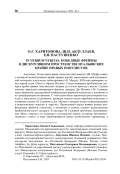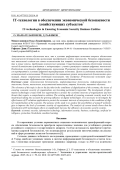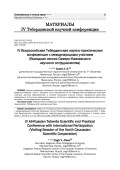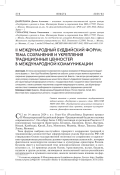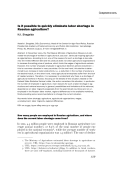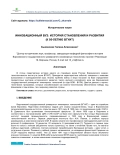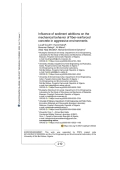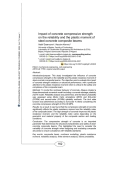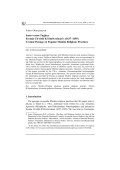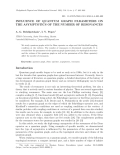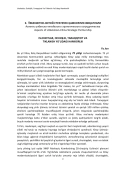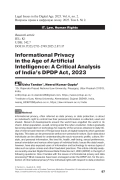В настоящее время «популистский момент» (Ш. Муфф) совпал с четвертой волной развития крайне правых партий, нарастивших свой коалиционный потенциал в результате мейнстриминга (К. Мюдде). В Италии примерами таких партий стали «Лига» и «Братья Италии». Статья посвящена проблематике дискурса крайне правых популистских лидеров до и после прихода к власти. Сделана попытка определить выигрышную формулу дискурса Дж. Мелони и М. Сальвини через выявление дискурсивной конфигурации фреймов популизма и нативизма и их трансформацию во времени. С этой целью были критически рассмотрены подходы к популизму и нативизму, проведен контент-анализ фреймов популизма и нативизма в речах М. Сальвини и Дж. Мелони и дискурс-анализ конструирования и репрезентации «народа» и «других». Проведенный анализ выявил разные конфигурации фреймов популизма и нативизма и разные степени радикализации правопопулистского дискурса. В дискурсе М. Сальвини произошла трансформация образа «народа» (от паданцев к итальянской нации), которому противопоставлялась «элита» в лице евробюрократов (ранее политические управленцы в Риме) и группа «ненарода» – иммигранты, прибывающие, прежде всего, из Азии и Африки и исповедующие ислам. В дискурсе Дж. Мелони сменились акценты с символического на экономический нативизм и шовинизм благосостояния, на место «борьбы» с «чужими» пришла проактивная позиция перераспределения благ и поддержки законности и правопорядка. Показано, что формула успеха Дж. Мелони заключалась в постепенной дерадикализации крайне правого дискурса и исключении из него неключевых и противоречивых вопросов.
Актуальность темы обусловлена тем, что в условиях цифровизации экономики вопросы обеспечения экономической безопасности организаций приобретают особую значимость. Развитие информационных технологий создает как новые возможности для защиты экономических интересов организаций, так и новые угрозы, требующие комплексного решения. Существующие методы обеспечения экономической безопасности нуждаются в модернизации с учетом растущего влияния цифровых технологий. Необходимо исследовать эффективность применения IT-решений для защиты экономических интересов предприятий в условиях цифровой трансформации экономики. Целью исследования является анализ возможностей использования IT-технологий для повышения уровня экономической безопасности организаций. Анализ современных тенденций показывает, что внедрение IT-технологий позволяет существенно повысить эффективность систем экономической безопасности
Данное сообщение посвящено научному мероприятию, которое проводится ежегодно на Северном Кавказе с 2014 г. Показано, что на протяжении 10 лет Тебердинская конференция стала престижным научным мероприятием, в котором принимают участие ученые, специалисты различных направлений, в том числе междисциплинарных, из России и зарубежных стран, изучающие горные эко-системы и их географические проблемы.
В статье рассматриваются мероприятия в рамках проведения II Международного буддийского форума в г. Улан-Удэ (Республика Бурятия) как события, целью которых является укрепление и сохранение традиционных духовно-нравственных ценностей. Вместе с тем авторы рассматривают, как через риторику сохранения традиционных ценностей и общность буддийской традиции укрепляются уже существующие международные контакты с государствами Азии и создаются новые гуманитарные соглашения, а также оценивают перспективы создания международного альянса, где общим фундаментом станет понимание необходимости сохранения и защиты традиционных ценностей.
In November 2023, the First Deputy Minister of Agriculture Oksana Lut estimated the shortage of workers in agriculture at 200,0001, obviously implying agricultural organizations. According to Lut, one of the reasons for such a shortage is low salaries: the limited effective demand for products does not allow agricultural organizations to increase the selling price of produce, which limits the wages of agricultural workers. However, the number of people employed in agriculture declines almost everywhere - this is a common situation in many countries. On the one hand, this decline is determined by an increase in labor productivity, i. e., a reduction in the number of workers is the desired result; on the other hand, many agricultural enterprises suffer from the lack of needed workers. Therefore, it is necessary to understand why there is a shortage of agricultural workers in Russia, focusing on the details of this situation. Based on the Federal State Statistics Service’s data, the author considers this situation, in particular the number of employed in agriculture, main reasons for such a labor shortage in agriculture and national economy in general, possibilities and limitations of the reliance/ dependence on labor migrants (especially from the post-Soviet countries) and on unemployed in the Russian labor market, regional differences in the available workforce, finally providing some recommendations to change the current situation.
The article presents the history of one of the oldest universities in Russia: Voronezh Institute of Chemical Technology (nowadays VGUIT). It characterizes the events connected with the names of graduates and teachers of the university. The analysis of the problems of war and peace is built on the basis of determining the priority vectors of historical development of such a large Russian university as Voronezh State University of Engineering Technologies (during WWII - VKHTI). The data on scientific and technical programs that contributed to both military and technical support of victory over fascism during the war and peaceful development of the country are given.
Introduction/purpose: The use of supplementary cementitious materials (SCM) in construction has gained popularity due to their ability to improve the mechanical properties and environmental sustainability of concrete. This study aimed to investigate the potential of utilizing waste materials, specifically marble powder (MP) and dam sediment (DS), as partial replacements for cement in self-compacting concrete (SCC). The primary objectives were to recycle these waste materials and assess the durability and strength of SCC exposed to aggressive chemical environments.
Methods: In this study, cement was partially replaced with 40% MP, 40% DS, and a combination of 20% MP and 20% DS. The performance of such concrete was evaluated through compressive strength tests conducted for 28 days. Durability was assessed by exposing the concrete to chemical attacks from hydrochloric acid (HCl), sulfuric acid (H₂SO₄), and sodium sulfate (Na₂SO₄) solutions. Mass loss due to these chemical attacks was also measured.
Results: The concrete incorporating MP demonstrated compressive strengths similar to that of the control concrete, achieving 37.61 MPa at 28 days. The concrete with DS exhibited lower strength (31.81 MPa) and showed higher resistance to HCl (ML = 38.78%) compared to the MP concrete (ML = 40.74%). Additionally, all concrete samples exhibited good resistance to sulfuric acid due to the formation of expansive ettringite which protected the concrete from further degradation.
Conclusions: The results indicated that both marble powder and dam sediment are viable supplementary materials for improving the mechanical properties and durability of SCC. The concrete with marble powder showed superior strength, while dam sediment contributed to enhanced acid resistance. The combination of these materials offers a sustainable solution for concrete exposed to aggressive environments.
This study investigated the influence of concrete compressive strength on the reliability and the plastic resistance moment of steel-concrete composite beams. The objective was to evaluate the impact of concrete strength variations on structural performance, with a particular attention to the plastic resistance moment which is critical to the safety and compliance of the composite beam.
Methods: To model the nonlinear behavior of concrete, Abaqus created a three-dimensional numerical model including a concrete damage plasticity (CDP) model. Reliability analysis was performed, and the failure probability was assessed using Monte Carlo simulations (MCS) and first-order (FORM) and second-order (SORM) reliability methods. The limit state function was determined according to Eurocode 4 criteria considering the concrete compressive strength of 25 to 80 MPA.
Results: As a result, it was found that the compressive strength of concrete significantly affects the plastic resistance moment and the reliability index of the composite beam. The high strength of concrete improves the plastic resistance moment, and the reliability index varies depending on the geometric and material property of the composite section and loading conditions.
Conclusion: The compressive strength of concrete is an important parameter that determines the structural characteristics and safety of steel-concrete composite beams. This highlighted the need to consider the variability of concrete strength when designing and evaluating composite structures to ensure compliance with reliability standards.
Armenian polemical literature with Muslims from the early modern Ottoman context is very scarce. Unlike in Safavid Persia, public debates were not encouraged in the Ottoman Empire. Official polemical treatises from the Armenian milieu are lacking; little has survived in the historiographies, neo-martyrological accounts, and poetry about how Miaphysite (non-Chalcedonian) Apostolic Armenians positioned themselves within the cohabitation system of Ottoman society. Even less has survived in Armenian sources about popular Muslim religious practices. Therefore, a brief account of this matter provided by the 17th c. Armenian Constantinopolitan historiographer Eremia Kʻēōmiwrchean acquires great importance. The present article aims to explore the information provided by Eremia on popular Muslim religious practices, not only because it is a rare material preserved in the Armenian sources but, most importantly, because it reveals the topics of religious debates between Christians and Ottoman Muslims in everyday life.
We study quantum graphs with the Dirac operator on edges and the Kirchhoff coupling condition at the vertices. The number of resonances is determined numerically. It is revealed how the parameters of the quantum graph (particularly, the topological structure and the volume of the quantum graph as well as the parameters of the Dirac operator) affect the number of resonances.
Bu yil Xitoy Xalq Respublikasi tashkil etilganining 75 yilligi nishonlanmoqda. 75 yil davomida Kommunistik partiya rahbarligida Xitoy xalqi milliy mentalitetga mos ravishda rivojlanish yo‘lidan og‘ishmay, o‘ta qashshoqlikdan to‘liq farovonlikka erishish yo‘lini bosib o‘tdi. Xitoy oyoqqa turish, boy va qudratli bo‘lish uchun buyuk sakrashni amalga oshirdi va endi Xitoy modernizatsiyasi orqali kuchli davlat qurish va milliy tiklanish sari yangi bosqichga qarab bormoqda.
Informational privacy, often referred as data privacy or data protection, is about an individual’s right to control how their personal information is collected, used and shared. Recent AI developments around the world have engulfed the world in its charm. Indian population, as well, is living under the cyber-revolution. India is gradually becoming dependent on technology for majority of the services obtained in daily life. Use of internet and Internet of Things leave traces of digital footprints which generate big data. This data can be personal as well as non-personal in nature. Such data about individuals can be utilised for understanding the socio-economic profile, culture, lifestyle, and personal information, like love life, health, well-being, sexual preferences, sexual orientation and various other types of individual traits. Issues like data breach, however, have also exposed users of information and technology to various types of risks such as cyber-crimes and other fraudulent practices. This article critically analysis recently enacted Digital Personal Data Protection Act, 2023 (DPDP) in the light of following questions: How it tackles with the issues of informational privacy and data processing? What measures have been envisaged under the DPDP Act, for the protection of informational privacy? How individual rights with respect to data protection are balanced against the legitimate state interest in ensuring safety and security of the nation? Whether this right is available only against the State or against the non-State actors as well? etc. Having critically analysed DPDP Act, the article calls for further refinement of DPDP Act in various areas, more specifically, suggesting that, it is imperative that DPDP Act requires critical decisions based on personal data to undergo human review, ensuring they are not solely the result of automated data processing.
